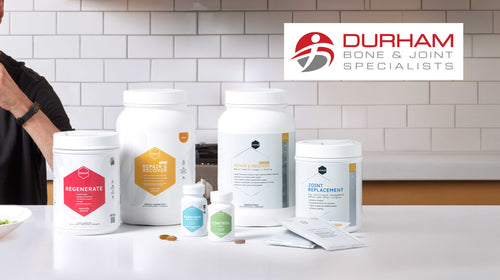Prebiotics…probiotics…most of us know these things are all good for us, but it can easily get confusing! Probiotics have been around for a while now – in terms of commercial availability, thanks to the probiotic yogurt drinks and shots we see on grocery store shelves. Prebiotics, on the other hand, are something that many people are not so familiar with. So let’s find out more about probiotics and prebiotics with regard to what they are, what they do and how they differ.
What are Probiotics?
Probiotics are various different types of live bacteria and yeasts which are naturally present in the digestive system, and in yoghurt and other dairy products. They can also be found in supplements for managing some gastrointestinal problems.
Probiotics help to provide a balanced environment in the digestive tract, aiding healthy digestion. They inhibit harmful bacteria, boost the immune system and increase our resistance to infection.
One problem with probiotics is that they are can be denatured or killed by excessive heat and acidity. This means that at least some of the probiotics we consume in our diet are not effective within our digestive system.
Another issue is that the term “probiotics” covers a huge range of different strains of bacteria and yeasts. One type of probiotic might be more beneficial than another, but we don’t necessarily know which strains we are consuming (source).
What are Prebiotics?
A prebiotic is a specific type of plant fiber – non-digestible carbohydrates, to be exact – which is not broken down by acids and heat, unlike live bacteria and yeasts. When prebiotic foods reach the colon, they are fermented by the bacteria naturally present there.
Although food sources high in fiber are good for us, not all fiber has prebiotic properties. Prebiotics are naturally present in foods such as oats, wheat, onions, garlic, leeks, asparagus, artichokes and soybeans.
A diet high in unhealthy food like sugar and many fats has been shown to encourage the growth of bacteria in the digestive system which is unhelpful, and potentially harmful to our bodies (source).
In contrast, the prebiotic foods we eat become a food source for the good bacteria that colonizes the digestive system, helping them to grow, multiply and keeping them healthy, creating a good environment within your digestive tract. (source).
Research suggests that prebiotics help to reduce infection, inflammation and bowel disease, reduce the risk of colon cancer and cardiovascular disease and enhance the uptake of many vitamins and minerals.
Studies also indicate that prebiotics can reduce the physical effects of stress, aid better balance of hormones in the body and boost our immune system function. They are also thought to assist in weight loss and reduce the risk of obesity by keeping us feeling fuller for longer (source).
Prebiotics vs. Probiotics?
In reality, it’s not that one or other of these is better for you. They are both beneficial when it comes to improving health because they work synergistically to improve the environment in our body.
Without probiotic bacteria, it is likely that prebiotics wouldn’t have such a beneficial effect, and in the presence of prebiotics, probiotics are given the optimum environment to flourish.
So to get the best from prebiotics and probiotics, we need to make sure there’s a plentiful supply of both in our body for maximum health benefits.
Here’s how…
Increase Probiotics By…
- Taking a daily probiotic. Research suggests that encapsulating probiotics protects them from their external environment, since they pass through the stomach and avoid contact with stomach acid before the capsule is broken down (source).
- Regularly including yoghurts which include live, active cultures.
- Adding cultured drinks, like kefir and acidophilus milk to your diet.
- Including fermented foods like sauerkraut, kimchi and fermented soy products in your diet. Many of these foods are easy to make at home.
Increase Prebiotics By…
- Considering a prebiotic supplement. Scientific studies indicate that supplementing the diet with prebiotics significantly increases the amount of good bacteria in the digestive system (source).
- Increasing your intake of chicory. Almost half of the fiber in chicory root is made up of the prebiotic fiber inulin, which has been proven to aid digestion, relieve constipation and reduce the risk of diabetes (source).
- Dandelion greens are a good source of prebiotics, and taste great in a salad.



